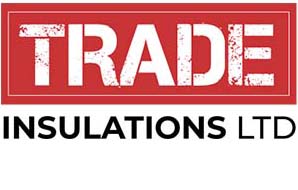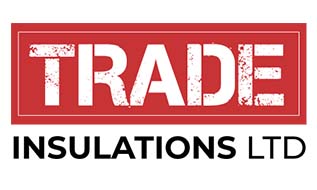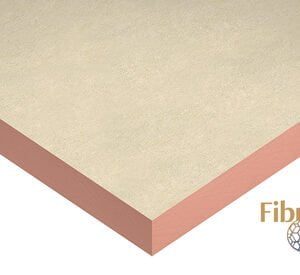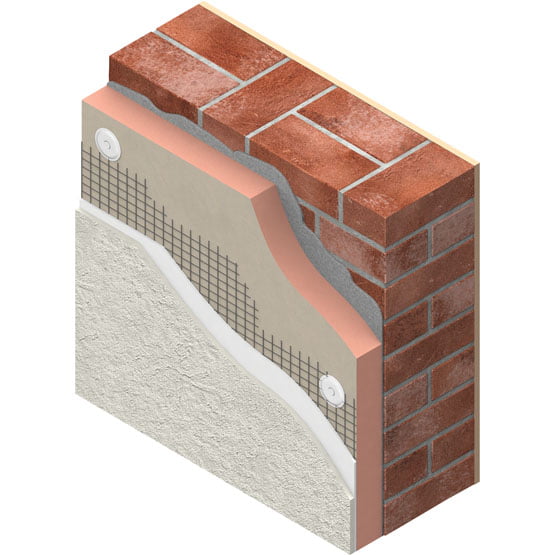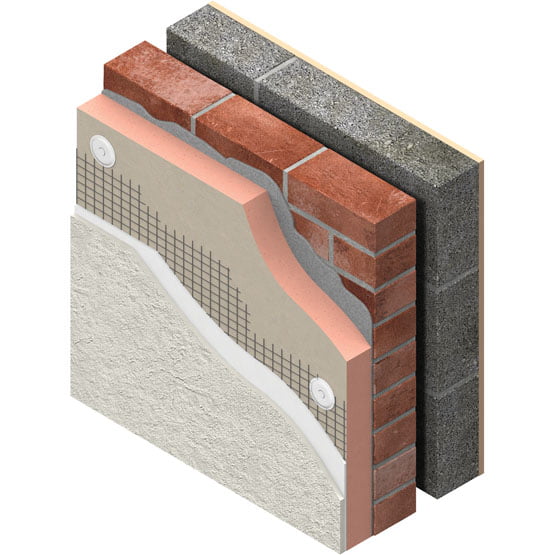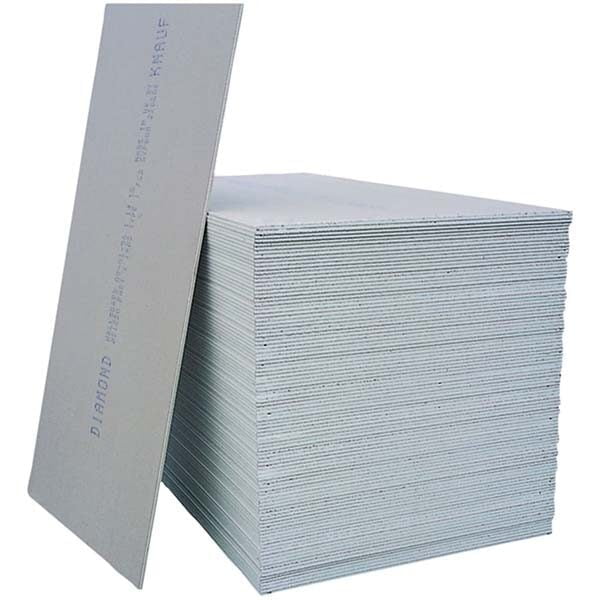External Wall Insulation
External wall insulation is a type of insulation that is applied to the exterior walls of a building. It is a cost-effective solution for improving the energy efficiency of a building. By insulating the exterior walls, it helps to prevent heat loss in the winter and reduces the amount of heat absorbed by the walls in the summer. This can result in lower energy costs and increased comfort for the building’s occupants. External wall insulation can also improve the building’s overall appearance.
Showing all 3 results
Kingspan Kooltherm K5 50mm External Wall Insulation Board (1200mm x 600mm) – 7.2m2 pack
Original price was: £149.61.£133.58Current price is: £133.58.Kingspan Kooltherm K5 70mm External Wall Insulation Board (1200mm x 600mm) – 4.32m2 pack
Original price was: £127.31.£113.67Current price is: £113.67.Kingspan Kooltherm K5 60mm External Wall Insulation Board (1200mm x 600mm) – 5.76m2 pack
Original price was: £145.83.£130.21Current price is: £130.21.What is External Wall Insulation?
External wall insulation is often simply referred to as EWI. There are several types of external wall insulation materials available, including mineral wool, polystyrene, and polyurethane. Mineral wool insulation is made from rock or slag, and is known for its fire resistance and high thermal performance. Mineral wool can be a material usued in a EWI system. Polystyrene insulation is made from expanded polystyrene beads, and is lightweight and easy to install. Polyurethane insulation is made from a mixture of polyurethane foam and a binder and is known for its high insulation value and durability.
External wall insulation can be applied in several different ways, including cladding, render, and dry lining. Cladding is a type of external wall insulation that involves attaching a layer of insulation material to the exterior walls of the building and then covering it with a layer of cladding material, such as wood or metal. Exterior insulated wall cladding panels can be used to enhance both the aesthetics and the thermal efficiency of a building. of a building’s exterior. In addition to these benefits, they also provide protection from the weather.
Render is a type of external wall insulation that involves applying a layer of insulation material to the exterior walls of the building and then covering it with a layer of render. Dry lining is a type of external wall insulation that involves attaching a layer of insulation material to the interior of the exterior walls of the building.
External Wall Insulation Benefits
One of the main benefits of external wall insulation is that it can significantly improve the energy efficiency of a building. By reducing heat loss through the walls, it can help to keep the building warmer in the winter and cooler in the summer, which can save money on heating and cooling costs. Additionally, external wall insulation can improve the overall comfort of the building by reducing drafts and cold spots.
Covering the exterior walls with cladding or render can give the building a fresh new look and protect the walls from the elements. External wall insulation can also increase the value of a building. By improving the energy efficiency and appearance of a building, it can make it more attractive to potential buyers or renters.
Cheap External Wall Insulation
Cheap external wall insulation is a great option for those looking to improve the energy efficiency of their building without spending a fortune. It provides many of the same benefits as more expensive insulation options, such as reducing heat loss and improving comfort, but at a more affordable price point.
One of the main advantages of cheap external wall insulation is that it is accessible to a wider range of people. With the rising cost of energy, many homeowners and building owners are looking for ways to reduce their bills, but may not have the budget for more expensive insulation options. Cheap external wall insulation makes it possible for these individuals to make energy-efficient upgrades to their buildings without sacrificing their financial stability.
Another advantage of cheap external wall insulation is that it is often just as effective as more expensive options. While some may assume that the lower cost means lower quality, many cheap external wall insulation materials are just as efficient at reducing heat loss as their more expensive counterparts. This means that building owners can still enjoy the same energy savings and comfort improvements, without having to spend as much money.
Cheap external wall insulation is also an eco-friendly option, it can help reduce carbon footprint and lower the usage of energy from non-renewable sources, it can also help in reducing the overall energy consumption of a building and contribute to the fight against climate change.
External wall insulation is an excellent choice for those looking to use less energy.
Installing External Wall Insulation
Installing external wall insulation is a process that typically involves several steps. These include surface preparation, insulation installation, cladding or render application, and finishing.
- Surface preparation: This step involves cleaning and repairing the exterior walls of the building to ensure that the insulation can be applied properly. This includes removing any dirt, debris, or old paint, and making any necessary repairs to the walls.
- Insulation installation: This step involves attaching the insulation material to the exterior walls of the building. This can be done using adhesive, mechanical fixings or a combination of both, depending on the insulation material and the method of application.
- Cladding or render application: This step involves covering the insulation material with a layer of cladding or render. This is done to protect the insulation from the elements and to improve the appearance of the building. This step is not necessary if the insulation is applied by dry lining.
- Finishing: This step involves painting, decorating, or otherwise finishing the exterior walls of the building to match the existing design or to create a new look.
It is recommended that the installation process be done by a professional insulation contractor, as they have the experience and knowledge to ensure that the insulation is applied correctly and in a way that will provide the most benefits. They are also aware of safety protocols and building codes.
Installing external wall insulation can be a relatively simple process that can provide long-term benefits for a building, such as improved energy efficiency, warmth, and aesthetics. It is important to choose the right insulation material and method of application for a specific building, and to have the installation process done by a professional insulation contractor.
External Wall Insulation frequently asked questions
How much does external wall insulation cost?
The cost of external wall insulation will depend on the size of the building, the type of insulation material being used, and the method of application. It is generally more affordable than internal insulation.
How long does it take to install external wall insulation?
The time it takes to install external wall insulation will depend on the size of the building and the method of application. It typically takes a few days to a week for a professional insulation contractor to complete the installation process.
Is external wall insulation suitable for all types of buildings?
External wall insulation can be used on most types of buildings, including houses, apartments, and commercial buildings. However, it may not be suitable for certain types of buildings, such as listed buildings, or buildings with specific architectural features.
Will external wall insulation affect the appearance of my building?
External wall insulation can actually improve the appearance of a building by covering the exterior walls with cladding or render, it can give the building a fresh new look, and also protect the walls from the elements.
Is external wall insulation worth the investment?
External wall insulation is a cost-effective solution for improving the energy efficiency of a building, it can save money on heating and cooling costs, improve the overall comfort of the building, and increase the value of the building. It is a relatively simple process that can be done by a professional insulation contractor and with the right insulation material and method of application, it can provide long-term benefits for any building.
